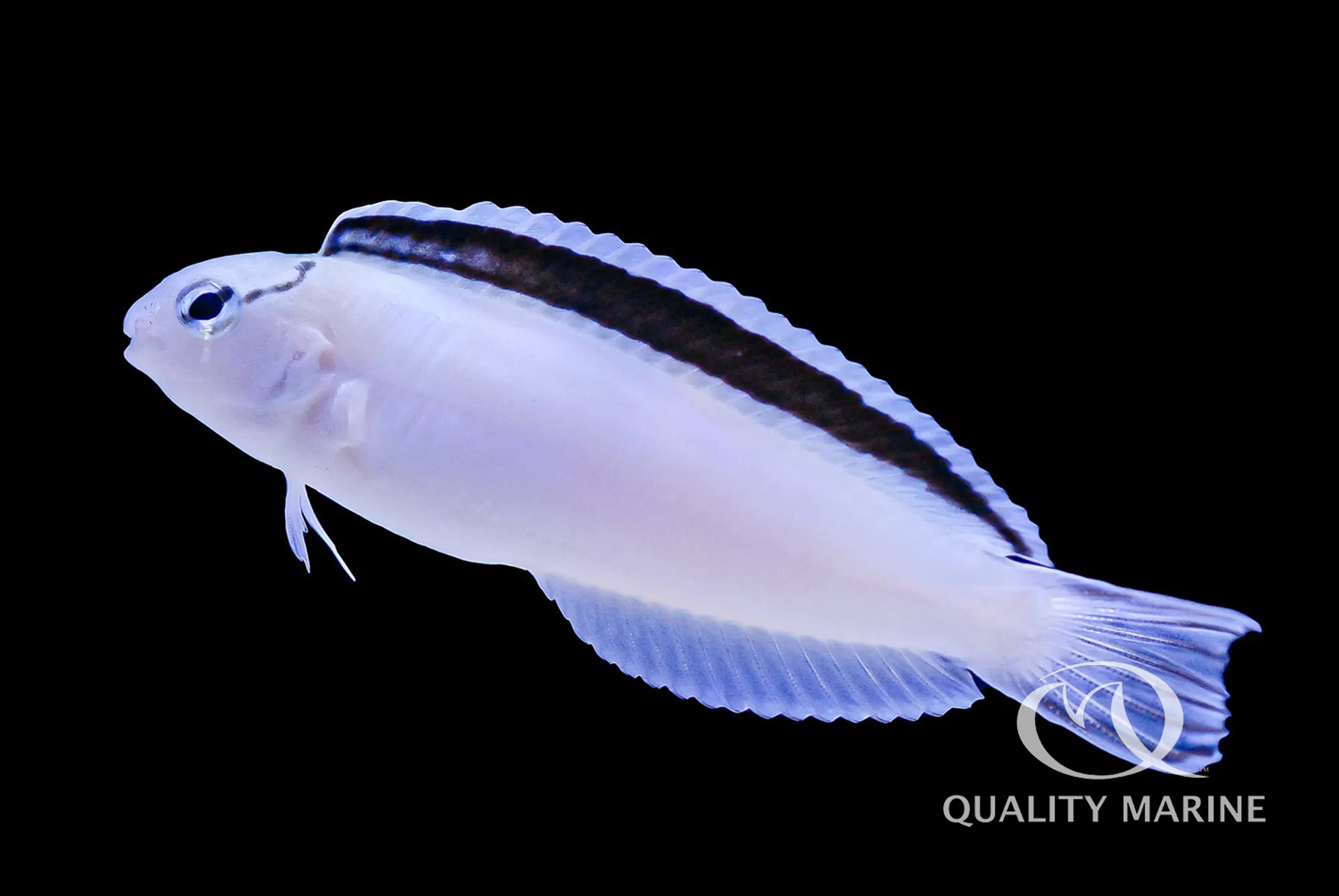Highly Underrated Fish - The White Blenny

The White Blenny is also frequently called Smith's Fangblenny, Smith's Harptail Blenny, Disco Blenny, and Blackband Blenny (actually this last one is “Blennie à bande noire” as this is the common name in French.) One of the very few pearly white fish suitable for the home aquarium. The White Blenny is a hardy fish that stays small and has a unique personality that should make it a mainstay in the hobby, but thus far it has flown somewhat under the radar.
In the Wild
Meiacanthus smithi is widely distributed throughout the shallow, tropical waters of the Indian and Pacific Oceans. Adults are frequently found in pairs whereas juveniles are usually solitary. Regardless of age they are found in and around sheltered reef habitats that offer an abundance of shelter. Spawning pairs are distinct and eggs are attached to the substrate, after hatching there the larvae are planktonic. The juveniles of the Two Lined Monocle Bream (Scolopsis bilineatus) reportedly mimic this Blenny.
In The Aquarium
If you start researching Meiacanthus genus fish, the first thing you'll find is that they are “Venomous.” This is likely the primary reason they aren't more popular. Truth be told, they do have a venom, expressed through their fangs, which feels like a bee sting if they bite you, which is difficult to make happen because of the size of their mouth. I have only ever been bitten by one while handling them during acclimating, the learning point here is to use a soft net with small holes when transferring them between systems. In our experience, this easily avoidable, somewhat minor hazard is literally the only downside to the genus.
They are extremely hardy, and able to survive / thrive in a variety of conditions. We feed them a mix of meaty foods and have found that they will very quickly accept a high quality pellet as well. As with all marine fish, a balanced and varied diet will boost their immune system and general vitality. The White Blenny is becoming more frequently available as an aquacultured specimen, which is unsurprising as they aren't that difficult to breed and raise (for a marine fish). While they are sexually dimorphic (you can tell males and females apart) the variance between sexes is difficult to see, and this can be a challenge for those hobbyists interested in attempting to breed any Meiacanthus.
All of the fish in this genus are small, and easily / happily kept in aquariums as small as 30 gallons. At less than 3.5 inches, M. smithi is perhaps the smallest commonly available fish in the genus. Their “venomous” bite allows them to be kept in much larger aquaria, even with some fish that would otherwise be assumed to be too aggressive to house with a fish this small. They are among the few Blenny fish that have a swim bladder. As a result of being bold by nature, they are frequently on display in every aquarium they go into. Adaptable, hardy, beautiful, reef safe, the list goes on and on with reasons you should consider the White Blenny as an addition to your aquarium.
Biblio:
Kuiter, R.H. and T. Tonozuka, (2001) Pictorial guide to Indonesian reef fishes. Part 2. Fusiliers - Dragonets, Caesionidae - Callionymidae. Seaford Zoonetics, Australia.
Reefs.com, Kenneth Wingerter ( 2020)
https://reefs.com/magazine/aquarium-fish-an-overvi... Accessed 29 September 2020.
Fishbase, Torres, Armi G. Luna, Susan M. (2014). https://www.fishbase.se/summary/7807. Accessed 29 September 2020
WORMS, Froese, R. and D. Pauly. (2020) http://www.marinespecies.org/aphia.php?p=taxdetai... Accessed 29 September 2020